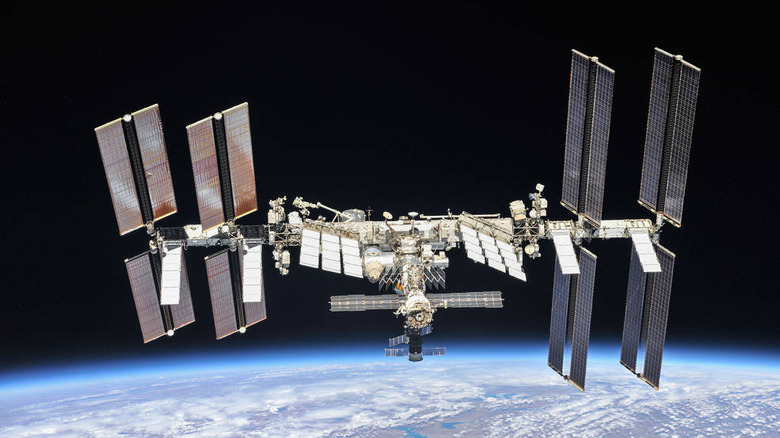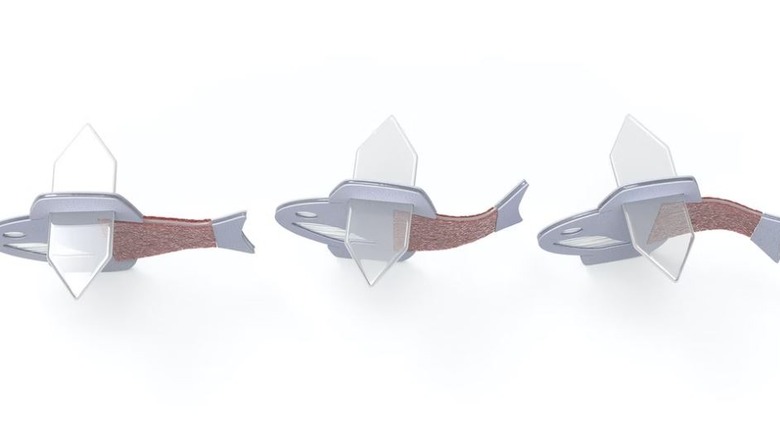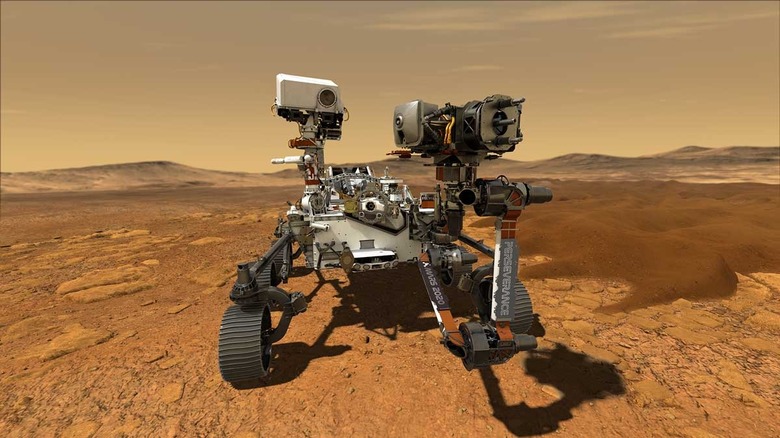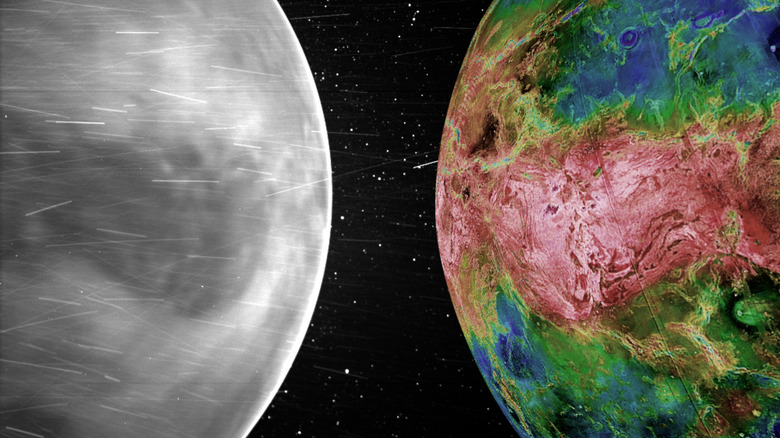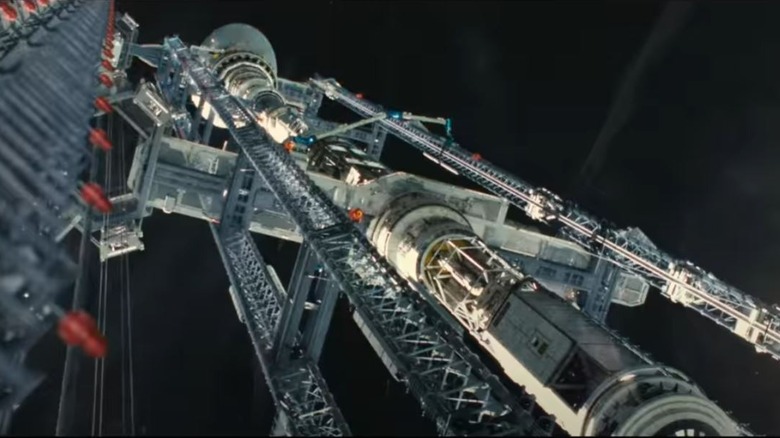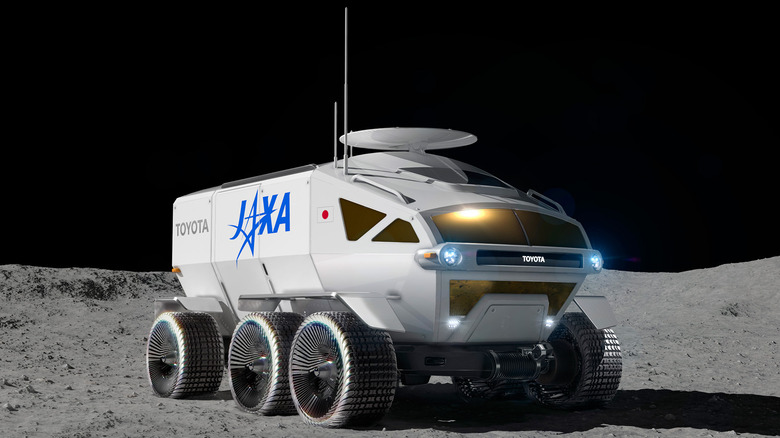The 12 Coolest Scientific Discoveries Of February 2022
While most of us are going about our day-to-day lives, paying bills, and keeping up with the latest Netflix shows, scientists and researchers are pushing the field of science inexorably forward. There are new discoveries and technologies emerging all the time and while some of those might enter into the public consciousness, it's easy for some truly cool stuff to get buried in the avalanche of news.
Staying informed on everything going on in the world can be a challenge and keeping up with science news on top of politics, current events, and entertainment isn't always easy. But we're here to help!
Keeping up with science and technology is what we do. Last month, scientists pushed the boundaries of a number of scientific fields, from astronomical events to paleontology, biology, and what happens in the moments before we die. With that in mind, we've curated a list of the twelve coolest things science brought to us in February 2022.
The James Webb Space Telescope sends back photos
After years of prep work and delays, the James Webb Space Telescope finally launched on December 25, 2021. The launch, however, was only the beginning. As NASA explains, once it was in orbit, the telescope had to go through hundreds of steps in order to fully deploy and calibrate its mirrors, not to mention completing the rest of its trip to its final home at the second Lagrange point.
Once there, the JWST started sending back pictures. The first image was a jumbled mess of light points. Each mirror was sending back an individual image of the same star in a scattered array. The next image, gathered just last month, still showed multiple distinct images of the star, but they were much more organized, illustrating improvements in the mirror alignments. It was a crucial step toward getting the telescope fully deployed and ready for observations.
The team behind the telescope continues to make adjustments and we're probably at least a couple of months away from the telescope being completely up and running, but the images it's sending back keep getting better and better (via ESA).
This is what it looks like when galaxies collide
The James Webb Space Telescope is the new kid on the block and is getting all the press, but Hubble is still out there doing the good work it's been doing for years and sending back incredible images of deep space.
One such image, released in February 2022, shows the ongoing collision of two galaxies, a haunting preview of what we might expect in a few billion years. Our nearest galactic neighbor, Andromeda, is on a five-billion-year road trip on its way to collide with the Milky Way (via Scientific American). Humans will very likely be gone, having become extinct or else evolved into some incredible spacefaring species, by the time Andromeda gets here. In the meantime, we can get an idea of what it might be like by looking at the image of Arp 143.
The image shows two galaxies, NGC 2445 and NGC 2444 as they race toward one another under the irresistible force of gravity. In the process, matter is being exchanged and rearranged, resulting in new star formation according to Phys.org. Galaxies colliding might sound frightening but most stellar systems won't be impacted, owing to the distance between stars. Instead, the sharing and remixing of gas and dust can generate the formation of new systems and despite being almost 200 million light-years away, Hubble is giving us a front-row seat.
New details about the extinction of the dinosaurs
The existence of dinosaurs in the past is one of the first things we learn when we're children. Shortly thereafter, we learn that they went extinct as a result of an asteroid impact in what is now the Gulf of Mexico. That event, occurring approximately 65 million years ago, represents the fifth major extinction of Earth's history, responsible for the death of approximately 80% of all species on Earth (via Britannica).
Learning more about what might have happened during that fateful day, or even more precisely when that day was, can be a challenge, but that doesn't stop scientists. A recent discovery suggests the asteroid impact occurred during the spring, which might have made things worse for the animals which survived the initial impact.
When we peer back through time, we're dependent on geological and fossil records to tell a story. Deciphering that story can be like translating a language we're learning as we go along. The results of the impact swept animal remains to a location in modern-day South Dakota. That's where scientists figured out the season, thanks to the seasonal growth patterns of fish bones. Spring is supposed to be a time of renewal and the impact that killed the dinosaurs took that job a little too seriously.
Do our lives flash before our eyes?
It's a long-running trope that, in the moments before our death, our lives flash before our eyes. Maybe it's a way of reminding us of our best experiences one last time, maybe it's a way for the brain to cope with dying, or maybe it's just a nice story.
Stories are often inspired by real-life experiences and a new study provides some evidence that our lives might actually play back for us in the moments surrounding death. An elderly patient diagnosed with epilepsy died in the hospital while connected to an EEG machine. Doctors and scientists recorded approximately 15 minutes worth of brain activity leading up to the patient's death but focused in on the 30 seconds before and after death to see what might have been going on inside the patient's brain.
During that time period, they saw changes in various forms of brain activity which could relate to a rapid retrieval and replay of memories. We need to tread carefully as this is only one patient and translating brain activity to lived experience is fraught with difficulty. Still, this could provide an explanation for the reported experience of a life replay when a person is near death.
What's happening on the International Space Station?
It's easy to forget that the International Space Station is up there, constantly orbiting, ferrying astronauts around the Earth every 90 minutes. The orbiting science laboratory has been doing its thing, continuously inhabited, for more than twenty years, and new experiments are being sent there all the time.
Last month, experimental payloads were delivered to the station in the hopes of gaining new information about how skin ages both in microgravity and on Earth. Orbiting astronauts have reported thinning skin which resembles changes that happen as we age here on Earth. The experiment, delivered to the station by Colgate-Palmolive, hopes to understand how skin changes over time in the environment of space, in order to help astronauts and Earth-bound people.
Other experiments sent to the station in February are looking at the behavior of tumors and plant growth in microgravity. Each of these experiments will not only tell us about the challenges inherent in living, working, and traveling in space, but can also provide critical information for better living here at home.
Building a biohybrid fish
Scientists at Harvard and Emory Universities are hoping to one day build an artificial heart from human tissues, in order to help children born with heart defects. In order to get there, we need to first have a much clearer understanding of how the heart works and those same scientists have built a biohybrid organism modeled after a zebrafish in order to do that.
During a trip to the aquarium with his daughter, Kit Parker, one of the authors on the study, noticed the jellyfish and realized he could probably build one out of rat heart tissue. Next, the team built a stingray. Finally, they built a zebrafish, this time using human heart cells.
The fish moves by way of two areas of cardiac tissue along its tail. They alternate contracting and relaxing, causing the tail to curve to one side or the other. Building this system allows us to understand how cardiac cells communicate with one another in order to keep the heart beating. The human tissues are the only biologically active part of the fish, kept alive by nutrients in the cell media it swims in, while the rest of the fish is made of layers of paper and gelatin. Future experiments aim to build more complex biohybrid organisms and, eventually, an artificial heart capable of being used by a human patient.
Perseverance broke a record, then broke it again
The Perseverance rover landed on Mars in February of 2021 and one year later it was breaking records. Or rather, breaking the same record two days in a row.
On February 4, 2022, just shy of the one-year anniversary of its landing on the red planet, Perseverance set the record for longest distance traveled on Mars in a single sol (Martian day), by traveling 798 feet. The next day, Perseverance traveled 806 feet, breaking the record once again.
Roughly 800 feet over the course of a sol — approximately 24.5 hours — may not seem very impressive, but it's enough that the previous record, achieved by the Opportunity rover, held for seventeen years. Mars isn't the most hospitable place and moving the rovers around requires communicating across distances measured in light minutes. It will be interesting to find out how long this new record stands, as our technology gets better, and we (hopefully) eventually put human boots on the ground of the red planet.
The Parker Solar Probe snaps photos of Venus
The Parker Solar Probe is one of the coolest machines humanity has ever built. Not only is it the fastest human-made machine in existence (via CNET), but it's also touched the outer atmosphere of the Sun. That is, in fact, what the Parker Solar Probe was built for.
Getting up to those incredible speeds and getting close enough to the Sun to gather the data it needs requires a series of gravitational assists from Venus. Since its launch in 2018, the probe has been in a complicated orbit which brings it alternatingly nearer to the Sun and Venus.
On its most recent pass of Venus, the probe turned its powerful infrared cameras on our sister planet. The instruments are powerful enough to peer through the Venusian atmosphere and image the hot surface below, in addition to getting visible light images of the planet's atmosphere. It was a worthwhile surprise as the surface of the planet is notoriously difficult to observe because of the high heat and pressure.
Injectable nanobots!
It's a common joke — at least we hope it's a joke 00 that doctors and scientists are injecting people with nanobots or other machines for tracking or other nefarious purposes. There's absolutely no evidence that this has been happening, but it might be someday soon.
Instead of injecting us with machines for malicious purposes, scientists have created exceedingly small injectable nanobots. These machines are about 70 microns in length, about the same width as a human hair, and are small enough to be injected with a standard syringe.
Making machines that small isn't a terribly new advancement, but the scale at which it can now be done is. The breakthrough came from a new manufacturing technique which results in roughly a million nanobots being produced from a single four-inch piece of silicon. For nanobots to really work in a medical setting, we'd have to be able to deploy them in large numbers and to specific places in the body. Presently, the nanobots are limited by their solar power source, but future versions might utilize electromagnetism or ultrasound to navigate around the body, target cells, and deliver medications.
Could we finally build a space elevator?
We've been thinking about space elevators for more than a hundred years – ever since Konstantin Tsiolkovsky first conceived of one in 1895, according to Britannica. To date, we haven't been able to build one, but they have been featured in a number of science fiction properties, including Andy Weir's recent novel "Project Hail Mary."
A space elevator, if constructed, would offer a safer, more convenient, and less energy expensive route to orbit, but there are some serious engineering challenges at play. Above all else, we don't currently have any material capable of withstanding the pressures involved in a construction project of that magnitude. In order for a space elevator to work, it would need to be anchored to the ground, probably somewhere in the ocean, and extend to a stable geosynchronous orbit in space.
The tether would need to be capable of withstanding its own weight on the ground, and the pulling forces at the space end. Two new proposals suggest that we could build a modified version of the space elevator using mostly contemporary materials and technologies, with some scientists believing we'll have our first elevator by the next century.
Miracle material?
Speaking of materials science, scientists at MIT have developed a new material that is both incredibly lightweight and strong. Researchers found a way to create a two-dimensional sheet of a new polymer called 2DPA-1, which they claim is lighter than plastic and stronger than steel. Because of its novel 2D structure, the forces it's able to withstand are staggering when compared to traditional plastic products. According to MIT, it's stronger than bulletproof glass and takes more force to break than steel.
The potential applications of the material are immense. Using one or a few sheets could create coatings for common devices like mobile phones or car parts, rendering them incredibly durable. Stacking even more sheets could result in robust construction materials even stronger than those currently in use.
Today, the height of a building is largely limited by the strength and weight of building materials. Stronger and more lightweight building materials could allow for the next generation of mega skyscrapers, or else just a phone case that protects your screen from cracking when dropped from more than a few feet.
The next generation of lunar rovers
The space race famously took place between the United States and the Soviet Union, as both governments endeavored to put human beings on the Moon. It essentially ended in 1969 when Apollo XI touched down on the lunar surface, and it ended in earnest after Apollo XVII when the last human beings walked on the Moon.
Lunar activities are preparing to gear up again as NASA readies for the first of the Artemis missions and it might be time for a new space race, one which looks a lot more like the races we're used to here at home. Automotive companies are developing the next generation of lunar rovers for use by NASA and other organizations once humans return to the Moon.
General Motors has already sent vehicles to the Moon, when they developed the Lunar Roving Vehicles for the Apollo program, and now they're developing an updated version for use by Artemis astronauts. The new rovers are expected to be faster, have a longer range, and be autonomous, but the real change is that they won't be the only cars on the Moon, at least not for long.
The Japan Aerospace Exploration Agency (JAXA) has partnered with Toyota for the creation of the Lunar Cruiser, a vehicle that looks more like a full-sized van than the lunar dune buggies we're used to. Here's hoping rival astronauts settle disputes with drag races.





